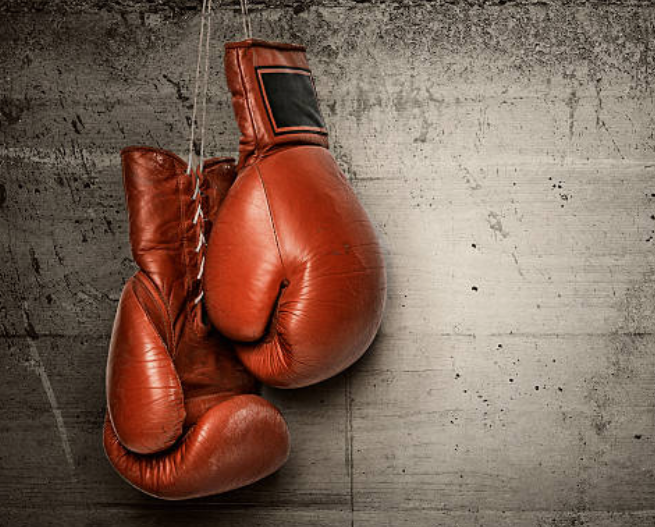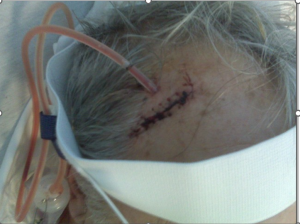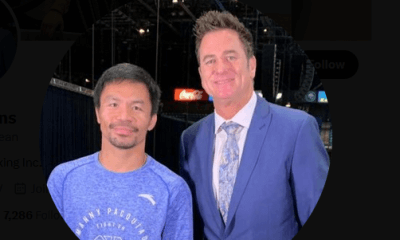Featured Articles
The Dreaded Subdural Hematoma

The Dreaded Subdural Hematoma
In 2016, I wrote an article for TSS titled, “Concussion: Now It’s Boxing’s Turn.” In the article, published on Aug. 16, I described the work of Dr. Bennet Ifeakandu Omalu who became famous for his work on Chronic Traumatic Encephalopathy (CTE) on football players using former Pittsburgh Steeler “Iron Mike” Webster as a key part of his study.
Six years later, Tris Dixon’s timely book, “Damage: The Untold Story of Brain Trauma in Boxing,” was published. In the book, Dixon wrote:
‘…This is boxing.’ CTE is actually punch-drunk syndrome. It was a big epiphany for me: ‘Hang on, the NFL are addressing this but we do nothing in boxing.’ I’d been in boxing 25 years and I didn’t know about CTE, tau protein and things that should be a staple. Fireworks went off in my head: ‘Wow, these guys worrying about the NFL could be worrying about boxing, which is far more dangerous.’ The NFL concussion debate started with The Mike Webster case in 2000. Boxing turned its back for nine decades and we haven’t had our Webster moment yet.” (emphasis mine)
To my delight, Tris affirmed what I had concluded in my 2016 article; to wit, a connection between Dementia Pugilistica and CTE existed. In fact, they might be the same.
January 2010
Before I wrote the 2016 article, I had a somewhat traumatic if not unique experience for a boxing writer—and this brings me to January 9, 2010.
While dining out out with my wife, I became incredibly thirsty. The following day I began to get disoriented with a splitting headache and short-term memory loss. I recall I could not put my watch on, type, or connect the buttons on my shirt. Something was wrong. After experiencing some confusion, I drove to my ophthalmologist’s nearby office at Memorial Hospital in North Conway, New Hampshire, thinking something was going on with my eye pressure. He took one look and immediately had me wheeled to emergency. He thought I was having a stroke and he was not far off.
I was then given an MRI after which I was Informed that the results showed I had a brain bleed and that I would be taken to the excellent Maine Medical Complex in Portland, Maine, where they were equipped to attend to the matter.
The 65-minute ambulance ride over icy roads (I chose ambulance over helicopter) was harrowing. The attendant asked my name and date of birth every five minutes. He also gave me a shot of something that relaxed me. His intent was to keep me conscious.
We finally reached the hospital (a large complex) and I was rolled to ICU on a stretcher and then, after a short while, assigned to a room where I met the operating surgeon, Dr. Joseph Alexander. I asked how serious a matter this was and he assured me that things would come out “just fine.” I also asked if this is what happens to boxers who suffer a subdural hematoma, and he replied, “if they are lucky” inferring that if they lose consciousness and/or a blood clot is present, things can get very tricky. Thankfully, neither one was involved in my case.
I was then prepared for the operation. My wife was with me the entire time staying in the nearby Regency Hotel.
I was quickly rolled into the operating room and commenced talking with the anesthesiologists. Suddenly, I went out like a light and the operation began to resolve the dangerously increasing pressure caused by the brain bleed.

I woke up in a bed with high rails and a tube in my head (see photo above) but I WOKE UP. The doctor said that when they opened up my skull, the blood gushed out like a geyser. They also had to remove part of my skull (see photo) to help ease the pressure of the swelling.
In retrospect, I had taken a bad fall a few months back. I had gotten out of bed too fast and fainted, landing hard on my head. Whether this was the cause could not be determined because there was some “old blood” in my skull, but I believe that it was. At any rate, I was confined to a nice private room for four days and subsisted on horrific hospital cuisine. I recall that a terrible earthquake had struck Haiti so I can accurately pinpoint the dates of these events.
The only discomfort I experienced was a headache and a bad reaction to OxyContin in which I became a jumping jack. It was horrible, but it was soon replaced by something that worked, Finally, on the fourth day, they removed the draining tube from my head and stitched the hole.
Research
During my time at the hospital, I made it a point to learn as much as I could about subdural hematomas. In particular, I was interested to see where my situation ranked in the scheme of things.
I found that speed is essential and that after a short time without blood flowing to the brain, unconsciousness takes place. Apparently, after a few short minutes without the oxygen that the fresh blood supplies, the brain begins to shut down. And then after about five-six minutes, the result can be irreversible brain damage or death. This was not my case, thank God, as the swelling of the brain did not cut off access to blood by squeezing shut the arteries and blood vessels that supply it.
Apparently, If the brain swells larger than the skull, bad things can happen. For example, the sign of blood coming out of the ears should be a warning sign whether in boxing or otherwise.
I had become an amateur expert on brain injuries thanks to reading and discussing the topic. I learned that my situation was on the lower end of the severity index, but I also learned that the critical variable of speed translates in boxing to an absolute need for competent medical assistance at ringside — oxygen, stretchers, and a waiting ambulance.
In this connection, the death of Willie Classen in 1979 begs to be reexamined. So does Greg Page’s case in 2002 where there was no ambulance, no team of paramedics, nor oxygen, all of which were required by law. The ringside doctor, Manuel Mediodia, wasn’t licensed in Kentucky and was under suspension in Ohio.
Their stories cannot be forgotten, nor should the 2013 case of Magomed Abdusalamov or the bizarre ring fatality of South African Simiso Buthelezi, a more recent example.
My hospital stay then ended, my son arrived and took me back home to New Hampshire where I started the rehab process and, sooner rather than later, fully recovered.
I had used up one of my nine.
October 2017
Unfortunately, the issue popped up again in 2017 when one of my sisters suffered a traumatic brain injury as a result of being struck by a truck in Las Vegas. After emergency surgery could not bring her back, she was put on life support machines. I knew more than most what was going on and I knew what needed to be done.
Upon arriving to Las Vegas I immediately went to the hospital and conversed with the neurologist. After staying at her side for two days to give her many friends and relatives a chance to say goodbye and/or to pray, I had the life support machines disconnected and remained alone with her until she passed about an hour later. It was another horrific incident that added to my body of knowledge on brain injuries. I think of her every day.
As far as boxing is concerned, the danger of a subdural hematoma is omnipresent, and it doesn’t discriminate: “
Ted Sares enjoys writing about boxing and can be reached at tedsares@roadrunner.com
To comment on this story in the Fight Forum CLICK HERE
-

 Featured Articles3 weeks ago
Featured Articles3 weeks agoVito Mielnicki Jr Whitewashes Kamil Gardzielik Before the Home Folks in Newark
-

 Featured Articles4 days ago
Featured Articles4 days agoResults and Recaps from New York Where Taylor Edged Serrano Once Again
-

 Featured Articles1 week ago
Featured Articles1 week agoFrom a Sympathetic Figure to a Pariah: The Travails of Julio Cesar Chavez Jr
-

 Featured Articles3 days ago
Featured Articles3 days agoResults and Recaps from NYC where Hamzah Sheeraz was Spectacular
-

 Featured Articles4 weeks ago
Featured Articles4 weeks agoCatching Up with Clay Moyle Who Talks About His Massive Collection of Boxing Books
-

 Featured Articles1 week ago
Featured Articles1 week agoCatterall vs Eubank Ends Prematurely; Catterall Wins a Technical Decision
-

 Featured Articles4 days ago
Featured Articles4 days agoPhiladelphia Welterweight Gil Turner, a Phenom, Now Rests in an Unmarked Grave
-

 Featured Articles3 weeks ago
Featured Articles3 weeks agoMore Medals for Hawaii’s Patricio Family at the USA Boxing Summer Festival



















